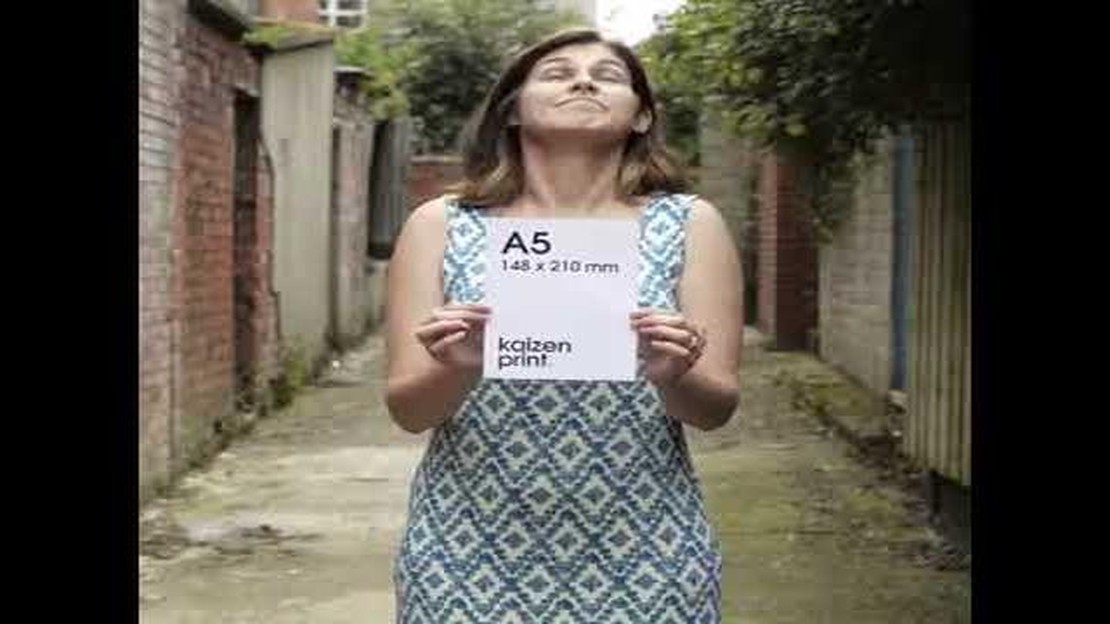Using Your TSP to Invest in Stocks: What You Need to Know
Using your TSP for Buying Stocks: Know the Possibilities and Limitations Are you a member of the Thrift Savings Plan (TSP)? If so, you have the …
Read Article
When it comes to printing, one of the most important aspects to consider is the size of the print. The print size determines how large or small the final image or document will be, and it can have a significant impact on the overall visual impact of the piece.
Understanding print sizes can be challenging, as there are many different standards and measurements used around the world. In this comprehensive guide, we will explore the most common print sizes, their dimensions, and how they are typically used in various contexts.
From standard sizes like 4x6 and 8x10 to larger formats like A4 and A3, we will cover it all. We will also discuss the differences between portrait and landscape orientations, as well as aspect ratios, and how they affect the composition and presentation of the printed material.
Whether you are a professional photographer looking to print your work, or a designer creating marketing materials, this guide will provide you with the knowledge and insights you need to make informed decisions about print sizes and create stunning printed pieces that capture attention and engage viewers.
Print sizes vary depending on the specific standards used by different countries and industries. Here are some of the most common print size standards:
 5. Tabloid: Tabloid size prints, also known as 11x17 inches or 27.9x43.2 centimeters, are often used for newspapers, magazines, and posters.
6. Poster: Poster size prints can vary greatly, but common poster sizes include 18x24 inches (45.7x60.9 centimeters), 24x36 inches (60.9x91.4 centimeters), and 27x40 inches (68.6x101.6 centimeters). These larger prints are ideal for advertising, promotional materials, and artistic displays.
7. Wallet: Wallet size prints are small prints measuring 2.5x3.5 inches or 6.4x8.9 centimeters. They are commonly used for school photos, identification cards, and sharing smaller versions of larger prints.
5. Tabloid: Tabloid size prints, also known as 11x17 inches or 27.9x43.2 centimeters, are often used for newspapers, magazines, and posters.
6. Poster: Poster size prints can vary greatly, but common poster sizes include 18x24 inches (45.7x60.9 centimeters), 24x36 inches (60.9x91.4 centimeters), and 27x40 inches (68.6x101.6 centimeters). These larger prints are ideal for advertising, promotional materials, and artistic displays.
7. Wallet: Wallet size prints are small prints measuring 2.5x3.5 inches or 6.4x8.9 centimeters. They are commonly used for school photos, identification cards, and sharing smaller versions of larger prints.
It’s important to note that these are just a few of the common print size standards. Print sizes can vary depending on the specific requirements of different industries and individual preferences.
When it comes to printing, choosing the right print size is essential to ensure that your final product meets your needs and expectations. Whether you are printing photographs, posters, or documents, selecting the appropriate print size can make a significant difference in the overall quality and impact of your printed materials. Here are some factors to consider when choosing a print size:
Read Also: What is the Forex Code for Natural Gas?
By taking these factors into account, you can choose the right print size that perfectly suits your needs. Whether you are printing for personal use or for professional purposes, selecting the appropriate print size will help ensure a visually appealing and high-quality final product.
When it comes to printing your photos, it’s important to understand aspect ratios and cropping. Aspect ratio refers to the proportional relationship between the width and height of an image. Different print sizes may have different aspect ratios, which means that some cropping may be required to fit your image properly.
Read Also: Why is Ubiquiti so cheap? Uncovering the secrets behind the affordable prices
Before printing your photos, it’s a good idea to familiarize yourself with the aspect ratio of the print size you’re interested in. Common aspect ratios for print sizes include 4:6, 5:7, and 8:10. This means that the width is a certain proportion of the height.
If your photo does not have the same aspect ratio as the print size you want, you may need to crop it. Cropping involves trimming the edges of the image to fit the desired aspect ratio. This can sometimes result in parts of the original photo being cut off.
When cropping your photos for print, it’s important to consider the composition and subject of the image. Make sure to leave enough space around the main subject to prevent important details from being lost during cropping. You can use photo editing software or online tools to crop your images to the desired aspect ratio.
It’s also worth mentioning that some print sizes, like 4x6 and 8x10, have the same aspect ratio, so you won’t need to crop your photos if they have the correct aspect ratio to begin with.
Understanding aspect ratios and cropping can help you ensure that your printed photos look their best. Take the time to familiarize yourself with the aspect ratios of different print sizes and make any necessary adjustments to your photos before printing.
The most common print sizes are 4x6, 5x7, and 8x10 inches.
The print size for framing depends on the size of the frame you have. It’s best to choose a print size that is slightly smaller than the frame size to allow for matting.
Aspect ratio is the proportional relationship between the width and height of an image, while print size refers to the physical dimensions of the print.
The largest print size available may vary depending on the printing method and equipment used, but common large print sizes include 16x20, 20x30, and 24x36 inches.
Yes, many photo printing services offer the option to print photos in custom sizes. However, keep in mind that some cropping or resizing may be necessary to fit the desired dimensions.
Standard print sizes are pre-determined sizes that are commonly used in the printing industry, such as 4x6 inches or 8x10 inches. Custom print sizes, on the other hand, are sizes that are not commonly used and can be tailored to specific needs and preferences.
When choosing a print size, you should consider the purpose of the print, the resolution of the image, the orientation (portrait or landscape), the location where it will be displayed, and any size requirements from the print shop or frame you plan to use.
Using your TSP for Buying Stocks: Know the Possibilities and Limitations Are you a member of the Thrift Savings Plan (TSP)? If so, you have the …
Read ArticleIs Eurex the Owner of EEX? Have you ever wondered about the relationship between Eurex and EEX? These two names often appear in the context of …
Read Article4 Ways Payments are Made: Exploring Different Payment Methods In today’s digital age, there are numerous methods of making payments, each with its own …
Read ArticleIs a systems analyst a good career? A career as a systems analyst can offer numerous benefits and exciting opportunities in today’s fast-paced and …
Read ArticleUnderstanding the Candle Body Size Indicator in MT5 Using chart indicators is a crucial part of technical analysis in trading. One such indicator that …
Read ArticleCan you buy $500 worth of shares? Investing in stocks can be a great way to grow your wealth over time. However, many people are under the impression …
Read Article